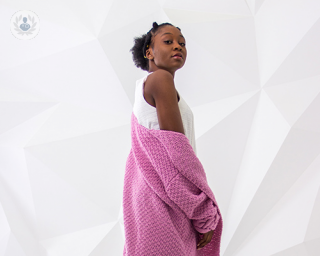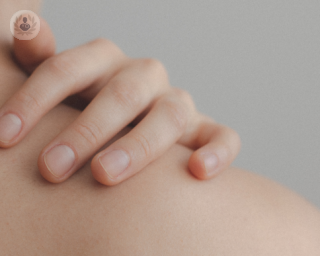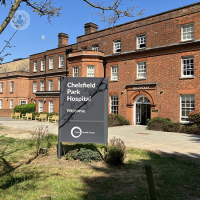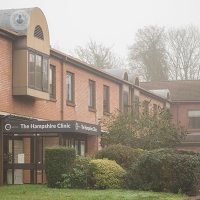What are keloid scars?
Keloid scars are formed during the healing of a wound. In the process, too much scar tissue is formed, resulting in abnormal growth, which is usually large, lumpy and red in appearance. The keloids that develop can sometimes be bigger than the actual wound ever was.

Can keloid scars be treated?
Treating keloid scars can be quite difficult. Surgery can be done in exceptional cases, as often the scar tissue regrows on the area. However, some treatments can sometimes decrease the size of a keloid or flatten it and make it smoother.
What are the symptoms of a keloid scar?
Keloid scars have the following characteristics:
- Form slowly, taking weeks or months to fully develop.
- Are pink, red or flesh-coloured and often shiny.
- Are lumpy or hard and usually hairless.
- Cause pain, itching, and tenderness in the area.
How are keloid scars diagnosed?
A GP or dermatologist can diagnose keloid scars simply by looking at the skin during a physical examination. Sometimes a biopsy can be performed to rule out other pathologies related to the skin.
What are the causes of keloid scars?
The causes of keloid scars can be very diverse, and we do not fully understand why keloid scars sometimes develop. After the skin is injured, the cells try to repair it by scarring, and in some cases there is an over production of collagen, leading to the formation of a keloid scar.
Keloid scars can result from any of the following:
- Cuts
- Acne scars
- Chickenpox scars
- Surgical scars
- Ear piercings
- Vaccination sites
- Insect bites
- Tattoos
Keloid scars are not contagious or cancerous but can continue to grow and develop over time.

Can keloid scars be prevented?
Some people are more prone to developing keloid scars, including people with darker skin as well certain families in which they are common. Whilst keloids cannot be entirely prevented, they can be avoided by not having piercings, tattoos, injuring the skin and treating acne.
Can you treat a keloid scar at home?
Keloid scars can be treated by specialist dermatologists but you should not try to remove the scar tissue that makes up a keloid scar at home as this could lead to infection.
How are keloid scars treated?
Treating keloid scars is a challenge and results are not guaranteed. Even following removal, keloid scars can return in some cases. The following are possible treatment options for keloid scars:
- Steroid injections
- Steroid tape being applied to the scar tissue
- Silicone pads
- Freezing the scar with liquid nitrogen
- Laser therapy to reduce redness
- Surgery to remove the scar
Which type of specialist treats keloid scars?
Specialist dermatologists treat keloid scars.
10-26-2015 03-21-2023Keloid scars
Dr Lea Solman - Paediatric dermatology
Created on: 10-26-2015
Updated on: 03-21-2023
Edited by: Jay Staniland
What are keloid scars?
Keloid scars are formed during the healing of a wound. In the process, too much scar tissue is formed, resulting in abnormal growth, which is usually large, lumpy and red in appearance. The keloids that develop can sometimes be bigger than the actual wound ever was.

Can keloid scars be treated?
Treating keloid scars can be quite difficult. Surgery can be done in exceptional cases, as often the scar tissue regrows on the area. However, some treatments can sometimes decrease the size of a keloid or flatten it and make it smoother.
What are the symptoms of a keloid scar?
Keloid scars have the following characteristics:
- Form slowly, taking weeks or months to fully develop.
- Are pink, red or flesh-coloured and often shiny.
- Are lumpy or hard and usually hairless.
- Cause pain, itching, and tenderness in the area.
How are keloid scars diagnosed?
A GP or dermatologist can diagnose keloid scars simply by looking at the skin during a physical examination. Sometimes a biopsy can be performed to rule out other pathologies related to the skin.
What are the causes of keloid scars?
The causes of keloid scars can be very diverse, and we do not fully understand why keloid scars sometimes develop. After the skin is injured, the cells try to repair it by scarring, and in some cases there is an over production of collagen, leading to the formation of a keloid scar.
Keloid scars can result from any of the following:
- Cuts
- Acne scars
- Chickenpox scars
- Surgical scars
- Ear piercings
- Vaccination sites
- Insect bites
- Tattoos
Keloid scars are not contagious or cancerous but can continue to grow and develop over time.

Can keloid scars be prevented?
Some people are more prone to developing keloid scars, including people with darker skin as well certain families in which they are common. Whilst keloids cannot be entirely prevented, they can be avoided by not having piercings, tattoos, injuring the skin and treating acne.
Can you treat a keloid scar at home?
Keloid scars can be treated by specialist dermatologists but you should not try to remove the scar tissue that makes up a keloid scar at home as this could lead to infection.
How are keloid scars treated?
Treating keloid scars is a challenge and results are not guaranteed. Even following removal, keloid scars can return in some cases. The following are possible treatment options for keloid scars:
- Steroid injections
- Steroid tape being applied to the scar tissue
- Silicone pads
- Freezing the scar with liquid nitrogen
- Laser therapy to reduce redness
- Surgery to remove the scar
Which type of specialist treats keloid scars?
Specialist dermatologists treat keloid scars.


Keloid scars – what causes them, and how are they treated?
By Mr Alastair MacKenzie Ross
2024-11-21
Keloid scars occur when scar tissue continue to develop, and can become unsightly. Leading consultant plastic surgeon, Mr Alastair Mackenzie Ross explains what causes them, how they form, and how they can be treated. See more


Why do I have a keloid scar?
By Dr Mohammed Sayeedullah Shareef
2024-11-13
In around 10% of people, a keloid scar will form in the area where there used to be wound. You can identify one of these as a smooth, fibrous growth that slowly forms on the skin, and may keep growing if you don't receive the appropriate treatment. Dr Mohammed Shareef explains more: See more
Experts in Keloid scars
-
Mr Alastair MacKenzie Ross
Plastic surgeryExpert in:
- Melanoma
- Electrochemotherapy
- Keloid scars
- Scars
- Surgical oncology
- Skin cancer
-
Dr Richard Shaffer
Clinical oncologyExpert in:
- Osteoarthritis
- Dupuytren’s contracture
- Keloid scars
- Skin cancer
- Ledderhose disease
- Tendonitis
-
Dr Matthew Williams
Clinical oncologyExpert in:
- Brain tumour
- Metastasis
- Keloid scars
- Radiotherapy
- Skin cancer
- Spinal cancer
-
- See all

Mount Alvernia Hospital - part of Circle Health Group
Mount Alvernia Hospital - part of Circle Health Group
Harvey Road, Guildford GU1 3LX
No existe teléfono en el centro.
By using the telephone number provided by TOP DOCTORS, you automatically agree to let us use your phone number for statistical and commercial purposes. For further information, read our Privacy Policy
Top Doctors

Chelsfield Park Hospital - part of Circle Health Group
Chelsfield Park Hospital - part of Circle Health Group
Bucks Cross Rd, Chelsfield, Orpington BR6 7RG
No existe teléfono en el centro.
By using the telephone number provided by TOP DOCTORS, you automatically agree to let us use your phone number for statistical and commercial purposes. For further information, read our Privacy Policy
Top Doctors

Hampshire Clinic - part of Circle Health Group
Hampshire Clinic - part of Circle Health Group
Basing Rd, Old Basing, Basingstoke RG24 7AL
No existe teléfono en el centro.
By using the telephone number provided by TOP DOCTORS, you automatically agree to let us use your phone number for statistical and commercial purposes. For further information, read our Privacy Policy
Top Doctors
-
Mount Alvernia Hospital - part of Circle Health Group
Harvey Road, Guildford GU1 3LX, GuildfordExpert in:
- Hip
- Cancer
- Cardiology
- General Surgery
- Orthopaedic surgery
- Orthopaedic spinal surgery
-
Chelsfield Park Hospital - part of Circle Health Group
Bucks Cross Rd, Chelsfield, Orpington BR6 7RG, OrpingtonExpert in:
- Vascular Surgery
- Cardiology
- Colorectal surgery
- General Surgery
- Maxillofacial Surgery
- Orthopaedic surgery
-
Hampshire Clinic - part of Circle Health Group
Basing Rd, Old Basing, Basingstoke RG24 7AL, BasingstokeExpert in:
- Vascular Surgery
- Cardiology
- Minimal access surgery (keyhole surgery)
- Endocrine Surgery
- Maxillofacial Surgery
- Neurological spinal surgery
- See all
- Most viewed diseases, medical tests, and treatments
- CAR-T cells
- Hormone therapy
- Migraine
- Hodgkin's lymphoma
- Autoimmune diseases
- Endermologie
- Polynucleotides
- Head and neck cancer
- Neck lump
- Acellular dermal matrix (ADM)







